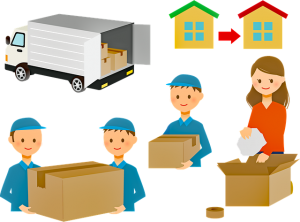Pipe Lifting Equipment – Dangers Involved and Hazard Analysis

Construction sites are filled with heavy machinery like forklifts, cranes, bulldozers, road rollers, pressure equipment, etc. Of them, some of the machinery is used for loading, unloading, pushing, and pulling heavy weights which are necessary for construction.
So, while handling this pipe lifting equipment, the operators must be careful and trained to carry the heavy loads. They must have the experience to effectively analyze how much weight the machines can carry without falling off abruptly in the middle of the operation.
However, due to poor knowledge or incorrect analysis of the weight, undesirable accidents may occur in the construction sites which can be fatal sometimes. You need to know about different kinds of pipe lifting equipment and being aware of these dangers will not only give you knowledge but you will acquire foresight on how to avoid them.
Today, in this blog, you’ll learn about the common and possible dangers involved with pipe lifting equipment and how you can avoid them.
Dangers Involved:
- Equipment failure
All the equipment used in the construction are made with iron or steel. So, overtime, due to the exposure of air and moisture, the machinery may start to rust. If you don’t react in time, the rust can spread, damaging the joints, bend points, etc.
To avoid this, an inspection must be done to every piece of equipment by a licensed officer. All the weak points, danger bends, etc. must be recognized and rectified from time to time. The officer will give you a valid inspection report which means that you are safe to use the equipment.
The possible dangers associated with equipment failure are, for instance, cranes might break in the middle causing an immense collision on the ground. The hanging hook might fall off when carrying the load from one point to another. It could be severely dangerous for the workers on the ground.
- Falling of load
When the equipment fails or if the operator is not skilled enough to handle the pipe lifting equipment, the load may fall off. The load itself not only gets damaged but causes harm to anybody or anything that’s below it.
The cause for the falling of load is because the operators might not calculate the right weight while carrying it up and down. Called as hazard analysis (we will learn about it later in detail), it determines how much weight can one machine carry without causing any harm to anybody.
Not only while carrying, but also while unloading, proper care must be taken that the load is not clumsily kept on the ground.
- Load hitting persons of plant facilities
Sometimes, the load if not properly fastened, can fall if the wind in the construction area is too high. For instance, for operating cranes, you must see that the wind speed is less than 25 knots. Also, the swing radius must be at a point where it doesn’t hit any facility equipment surrounding it.
Failing to take these measures could result in severe injuries to people and irreparable damage to the plant equipment. You will not only lose the man labor but it could increase the cost of your project.
- Operation by unauthorized personnel
Imagine a child handling an oven or washing machine at your home. There are so many things that could go wrong. The same is the case when you let unauthorized personnel handle your pipe lifting equipment.
There’s often science and sense involved when you have to handle cranes, forklifts, etc. The operators must have a fine knowledge of what they have to do. To recruit such eligible persons, take care while you interview and check their credentials carefully.
If you’ve found any person with profound knowledge but only lacks a license, tell them about high-risk work license and how to get it. The license shows that they are 100% eligible to handle risky jobs which means you can avoid dangers as much as possible.
We’ve seen till now the dangers associated with the lifting equipment. However, like any other, there are possible solutions to it. It’s called hazard analysis.
Hazard Analysis or Assessment:
In this assessment, there are different factors that you need to consider which help you to analyze the right risk and how to avoid it. The factors are:
- Weight of the load lifted
- Range of the lift
- Location of the pipe
- Size and shape of the pipe
- Number and frequency of lifts performed
- Proper selection of equipment for the loading and unloading tasks
- Pinch points/line-of-fire area
- Overloaded or improperly loaded (poor weight distribution) trucks/rails/trailers
- Uneven and/or shifted loads reducing the overall stability of the load/vehicle
- Missing or damaged strapping/tie-downs
- The requirement for stanchions on trailers/trucks
- The potential energy stored in the load
- Means of securement (tie-down strap, banding, etc.)
- The proximity of the operation to overhead power lines or other structures
- Presence of ice, snow, or other environmental hazards
- Worker safety when working from an elevated position
- Proper selection of lifting rigging (chains, slings, straps, vacu-lifts, etc.)
- Qualified operators must run the lifting equipment
- Change of ground conditions as it relates to equipment stability
Trained or licensed personnel will consider all these factors before they do a lifting job. They include not only related to the weight of the load but also external factors like weather, equipment security, etc.
Hazard assessments are managed by the supervisors who look over the construction project. they have to conduct, review, and update the assessment when:
- There’s a new task assigned or there’s a change in the task performed
- At the start of each shift
- As and when required
- When there is environmental change
- When there’s a change in ground level and weather conditions
When there’s no fail in taking this assessment at the particular conditions mentioned, there’s no danger that’s voluntarily caused on the construction sites. Taking proper care and with logical caution, while operating the machines, one can avoid the dangers in the construction sites.
Conclusion:
Whether it’s due to human error or some external reasons, you can’t completely avoid certain causalities in construction sites. However, you can make them as negligible as possible by taking care of all the safety measures. You can not only minimize the risks but also enhance a healthy working atmosphere in your site. You will stand as an example of safeguarding the workers’ life.
Author Bio:
Hello everyone, I am Ariana Mortenson. I am a professional writer and blogger. I write on various niches in a way that it’s understandable and appealing to the people and allows you to make informed and valuable choices. Follow me on Twitter, LinkedIn and Pinterest.






